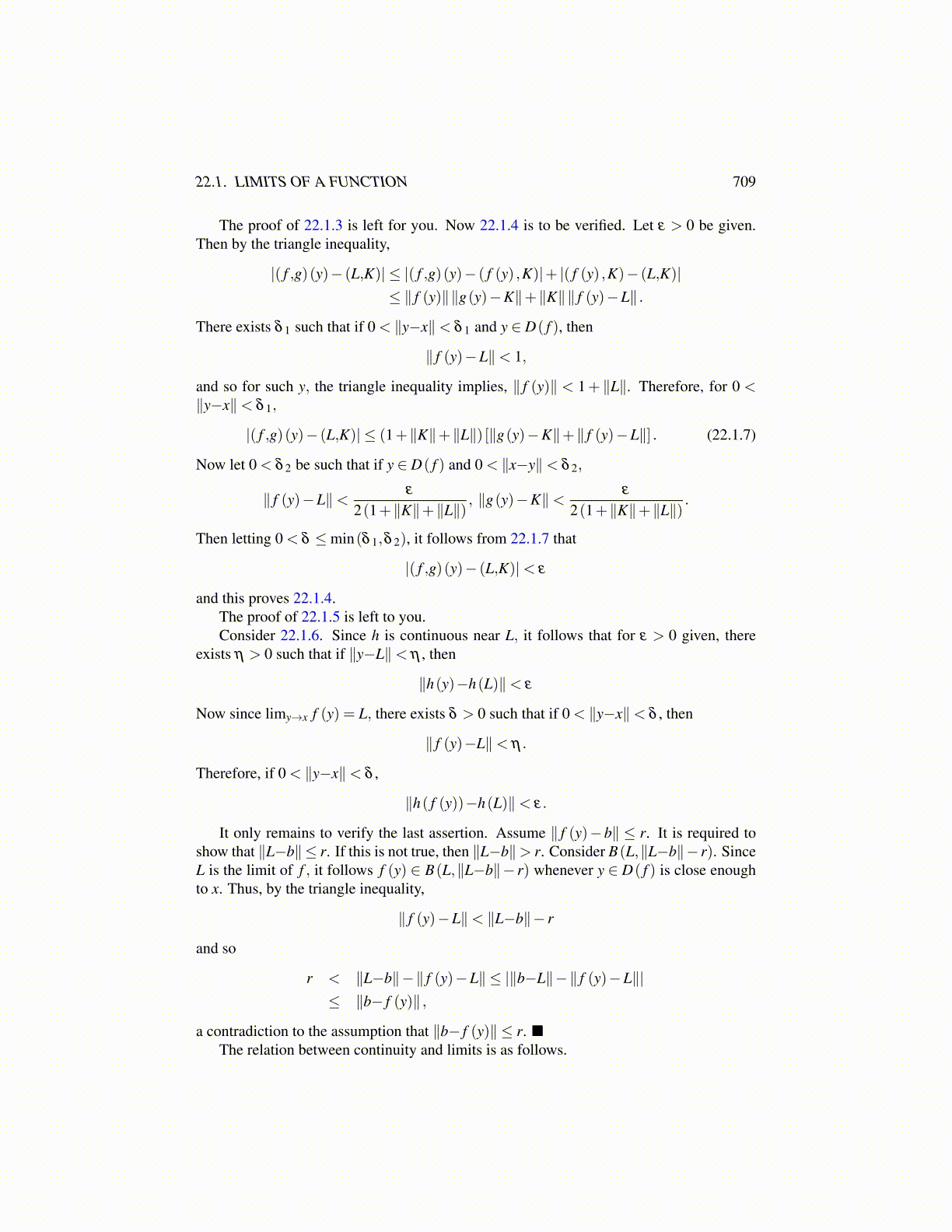
22.1. LIMITS OF A FUNCTION 709
The proof of 22.1.3 is left for you. Now 22.1.4 is to be verified. Let ε > 0 be given.Then by the triangle inequality,
|( f ,g)(y)− (L,K)| ≤ |( f ,g)(y)− ( f (y) ,K)|+ |( f (y) ,K)− (L,K)|≤ ∥ f (y)∥∥g(y)−K∥+∥K∥∥ f (y)−L∥ .
There exists δ 1 such that if 0 < ∥y−x∥< δ 1 and y ∈ D( f ), then
∥ f (y)−L∥< 1,
and so for such y, the triangle inequality implies, ∥ f (y)∥ < 1+ ∥L∥. Therefore, for 0 <∥y−x∥< δ 1,
|( f ,g)(y)− (L,K)| ≤ (1+∥K∥+∥L∥) [∥g(y)−K∥+∥ f (y)−L∥] . (22.1.7)
Now let 0 < δ 2 be such that if y ∈ D( f ) and 0 < ∥x−y∥< δ 2,
∥ f (y)−L∥< ε
2(1+∥K∥+∥L∥), ∥g(y)−K∥< ε
2(1+∥K∥+∥L∥).
Then letting 0 < δ ≤min(δ 1,δ 2), it follows from 22.1.7 that
|( f ,g)(y)− (L,K)|< ε
and this proves 22.1.4.The proof of 22.1.5 is left to you.Consider 22.1.6. Since h is continuous near L, it follows that for ε > 0 given, there
exists η > 0 such that if ∥y−L∥< η , then
∥h(y)−h(L)∥< ε
Now since limy→x f (y) = L, there exists δ > 0 such that if 0 < ∥y−x∥< δ , then
∥ f (y)−L∥< η .
Therefore, if 0 < ∥y−x∥< δ ,
∥h( f (y))−h(L)∥< ε.
It only remains to verify the last assertion. Assume ∥ f (y)−b∥ ≤ r. It is required toshow that ∥L−b∥≤ r. If this is not true, then ∥L−b∥> r. Consider B(L,∥L−b∥− r). SinceL is the limit of f , it follows f (y) ∈ B(L,∥L−b∥− r) whenever y ∈ D( f ) is close enoughto x. Thus, by the triangle inequality,
∥ f (y)−L∥< ∥L−b∥− r
and so
r < ∥L−b∥−∥ f (y)−L∥ ≤ |∥b−L∥−∥ f (y)−L∥|≤ ∥b− f (y)∥ ,
a contradiction to the assumption that ∥b− f (y)∥ ≤ r.The relation between continuity and limits is as follows.